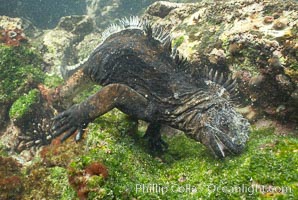
Marine iguana, underwater, forages for green algae that grows on the lava reef.
Species: Marine iguana, Amblyrhynchus cristatus
Location: Bartolome Island, Galapagos Islands, Ecuador
Image ID: 16227
Species: Marine iguana, Amblyrhynchus cristatus
Location: Bartolome Island, Galapagos Islands, Ecuador
Image ID: 16227
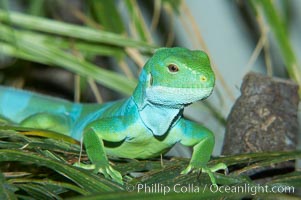
Banded iguana, male. The bands of color on the male of this species change from green to either blue, grey or black, depending on mood. Females are usually solid green, ocassionally with blue spots or a few narrow bands.
Species: Banded iguana, Brachylophus fasciatus
Image ID: 12612
Species: Banded iguana, Brachylophus fasciatus
Image ID: 12612
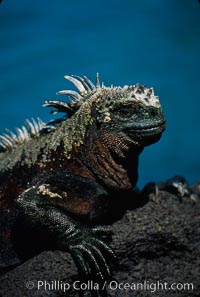
Marine iguana, Punta Espinosa.
Species: Marine iguana, Amblyrhynchus cristatus
Location: Fernandina Island, Galapagos Islands, Ecuador
Image ID: 01719
Species: Marine iguana, Amblyrhynchus cristatus
Location: Fernandina Island, Galapagos Islands, Ecuador
Image ID: 01719
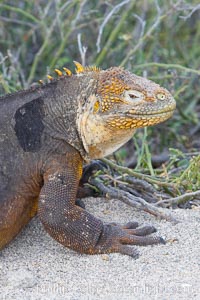
Galapagos land iguana.
Species: Galapagos land iguana, Conolophus subcristatus
Location: North Seymour Island, Galapagos Islands, Ecuador
Image ID: 16581
Species: Galapagos land iguana, Conolophus subcristatus
Location: North Seymour Island, Galapagos Islands, Ecuador
Image ID: 16581
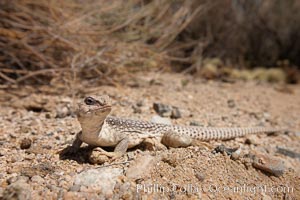
Desert iguana, one of the most common lizards of the Sonoran and Mojave deserts of the southwestern United States and northwestern Mexico.
Species: Northern desert iguana, Dipsosaurus dorsalis
Location: Joshua Tree National Park, California
Image ID: 26728
Species: Northern desert iguana, Dipsosaurus dorsalis
Location: Joshua Tree National Park, California
Image ID: 26728
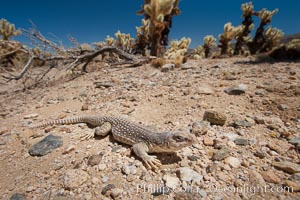
Desert iguana, one of the most common lizards of the Sonoran and Mojave deserts of the southwestern United States and northwestern Mexico.
Species: Northern desert iguana, Dipsosaurus dorsalis
Location: Joshua Tree National Park, California
Image ID: 26735
Species: Northern desert iguana, Dipsosaurus dorsalis
Location: Joshua Tree National Park, California
Image ID: 26735
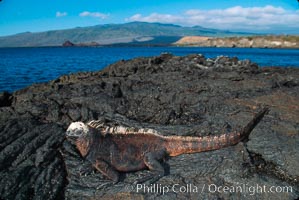
Marine iguana.
Species: Marine iguana, Amblyrhynchus cristatus
Location: James Island, Galapagos Islands, Ecuador
Image ID: 01715
Species: Marine iguana, Amblyrhynchus cristatus
Location: James Island, Galapagos Islands, Ecuador
Image ID: 01715
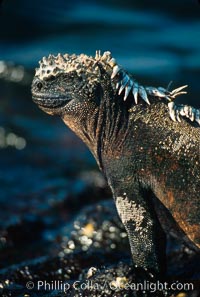
Marine iguana, Punta Espinosa.
Species: Marine iguana, Amblyrhynchus cristatus
Location: Fernandina Island, Galapagos Islands, Ecuador
Image ID: 01718
Species: Marine iguana, Amblyrhynchus cristatus
Location: Fernandina Island, Galapagos Islands, Ecuador
Image ID: 01718
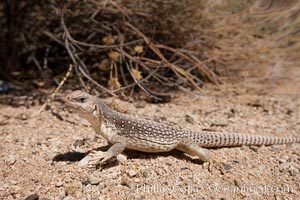
Desert iguana, one of the most common lizards of the Sonoran and Mojave deserts of the southwestern United States and northwestern Mexico.
Species: Northern desert iguana, Dipsosaurus dorsalis
Location: Joshua Tree National Park, California
Image ID: 26755
Species: Northern desert iguana, Dipsosaurus dorsalis
Location: Joshua Tree National Park, California
Image ID: 26755
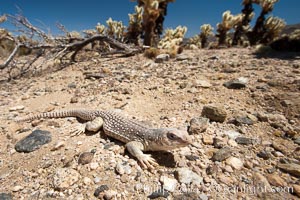
Desert iguana, one of the most common lizards of the Sonoran and Mojave deserts of the southwestern United States and northwestern Mexico.
Species: Northern desert iguana, Dipsosaurus dorsalis
Location: Joshua Tree National Park, California
Image ID: 26761
Species: Northern desert iguana, Dipsosaurus dorsalis
Location: Joshua Tree National Park, California
Image ID: 26761
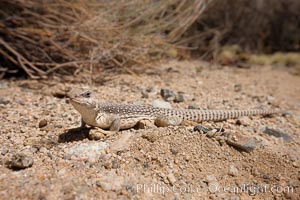
Desert iguana, one of the most common lizards of the Sonoran and Mojave deserts of the southwestern United States and northwestern Mexico.
Species: Northern desert iguana, Dipsosaurus dorsalis
Location: Joshua Tree National Park, California
Image ID: 26769
Species: Northern desert iguana, Dipsosaurus dorsalis
Location: Joshua Tree National Park, California
Image ID: 26769
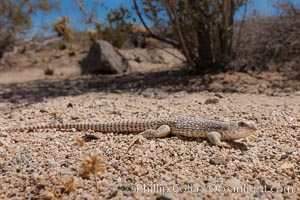
Desert iguana, one of the most common lizards of the Sonoran and Mojave deserts of the southwestern United States and northwestern Mexico.
Species: Northern desert iguana, Dipsosaurus dorsalis
Location: Joshua Tree National Park, California
Image ID: 26774
Species: Northern desert iguana, Dipsosaurus dorsalis
Location: Joshua Tree National Park, California
Image ID: 26774
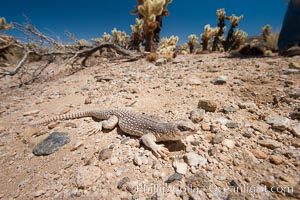
Desert iguana, one of the most common lizards of the Sonoran and Mojave deserts of the southwestern United States and northwestern Mexico.
Species: Northern desert iguana, Dipsosaurus dorsalis
Location: Joshua Tree National Park, California
Image ID: 26775
Species: Northern desert iguana, Dipsosaurus dorsalis
Location: Joshua Tree National Park, California
Image ID: 26775
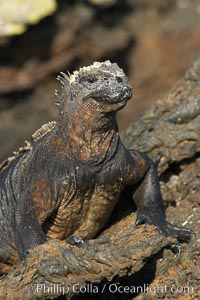
Marine iguana on volcanic rocks at the oceans edge, Punta Albemarle.
Species: Marine iguana, Amblyrhynchus cristatus
Location: Isabella Island, Galapagos Islands, Ecuador
Image ID: 16576
Species: Marine iguana, Amblyrhynchus cristatus
Location: Isabella Island, Galapagos Islands, Ecuador
Image ID: 16576
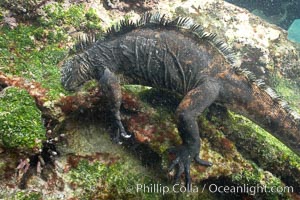
Marine iguana, underwater, forages for green algae that grows on the lava reef.
Species: Marine iguana, Amblyrhynchus cristatus
Location: Bartolome Island, Galapagos Islands, Ecuador
Image ID: 16228
Species: Marine iguana, Amblyrhynchus cristatus
Location: Bartolome Island, Galapagos Islands, Ecuador
Image ID: 16228
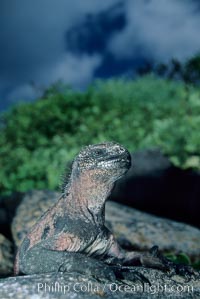
Marine iguana, Punta Espinosa.
Species: Marine iguana, Amblyrhynchus cristatus
Location: Fernandina Island, Galapagos Islands, Ecuador
Image ID: 03470
Species: Marine iguana, Amblyrhynchus cristatus
Location: Fernandina Island, Galapagos Islands, Ecuador
Image ID: 03470
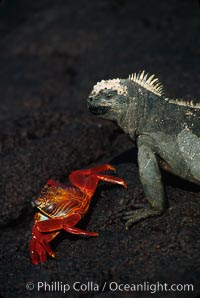
Marine iguana, Punta Espinosa.
Species: Marine iguana, Amblyrhynchus cristatus
Location: Fernandina Island, Galapagos Islands, Ecuador
Image ID: 01720
Species: Marine iguana, Amblyrhynchus cristatus
Location: Fernandina Island, Galapagos Islands, Ecuador
Image ID: 01720
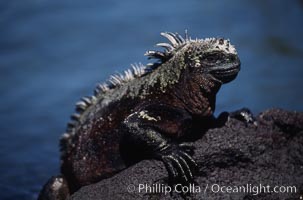
Marine iguana, Punta Espinosa.
Species: Marine iguana, Amblyrhynchus cristatus
Location: Fernandina Island, Galapagos Islands, Ecuador
Image ID: 01727
Species: Marine iguana, Amblyrhynchus cristatus
Location: Fernandina Island, Galapagos Islands, Ecuador
Image ID: 01727
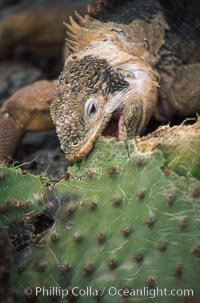
Galapagos land iguana.
Species: Galapagos land iguana, Conolophus subcristatus
Location: South Plaza Island, Galapagos Islands, Ecuador
Image ID: 01742
Species: Galapagos land iguana, Conolophus subcristatus
Location: South Plaza Island, Galapagos Islands, Ecuador
Image ID: 01742
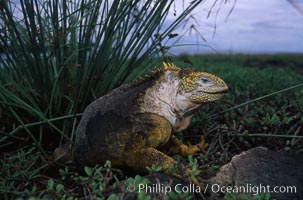
Galapagos land iguana.
Species: Galapagos land iguana, Conolophus subcristatus
Location: South Plaza Island, Galapagos Islands, Ecuador
Image ID: 02991
Species: Galapagos land iguana, Conolophus subcristatus
Location: South Plaza Island, Galapagos Islands, Ecuador
Image ID: 02991
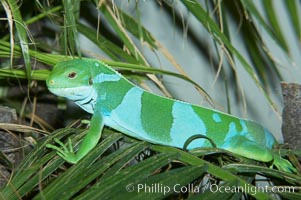
Banded iguana, male. The bands of color on the male of this species change from green to either blue, grey or black, depending on mood. Females are usually solid green, ocassionally with blue spots or a few narrow bands.
Species: Banded iguana, Brachylophus fasciatus
Image ID: 12611
Species: Banded iguana, Brachylophus fasciatus
Image ID: 12611
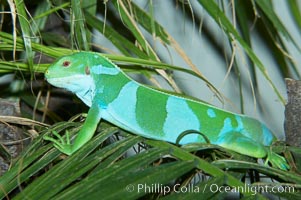
Banded iguana, male. The bands of color on the male of this species change from green to either blue, grey or black, depending on mood. Females are usually solid green, ocassionally with blue spots or a few narrow bands.
Species: Banded iguana, Brachylophus fasciatus
Image ID: 12613
Species: Banded iguana, Brachylophus fasciatus
Image ID: 12613
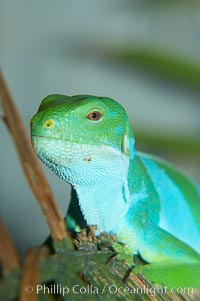
Banded iguana, male. The bands of color on the male of this species change from green to either blue, grey or black, depending on mood. Females are usually solid green, ocassionally with blue spots or a few narrow bands.
Species: Banded iguana, Brachylophus fasciatus
Image ID: 12614
Species: Banded iguana, Brachylophus fasciatus
Image ID: 12614
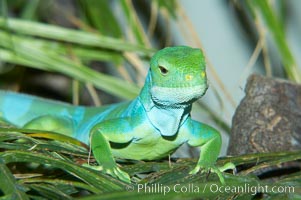
Banded iguana, male. The bands of color on the male of this species change from green to either blue, grey or black, depending on mood. Females are usually solid green, ocassionally with blue spots or a few narrow bands.
Species: Banded iguana, Brachylophus fasciatus
Image ID: 12620
Species: Banded iguana, Brachylophus fasciatus
Image ID: 12620
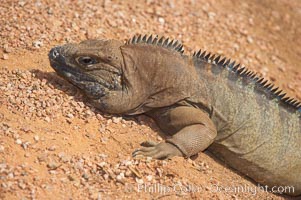
Caribbean rock iguana. Rock iguanas play an important role in the Caribbean islands due to their diet of fruits, flowers and leaves. The seeds pass through the digestive tract of the iguana and are left behind in its droppings, helping to spread the seeds the grow new plants.
Species: Caribbean rock iguana, Cyclura
Image ID: 12824
Species: Caribbean rock iguana, Cyclura
Image ID: 12824
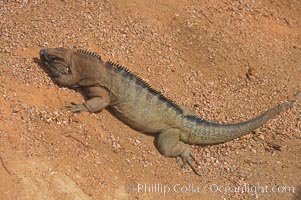
Caribbean rock iguana. Rock iguanas play an important role in the Caribbean islands due to their diet of fruits, flowers and leaves. The seeds pass through the digestive tract of the iguana and are left behind in its droppings, helping to spread the seeds the grow new plants.
Species: Caribbean rock iguana, Cyclura
Image ID: 12825
Species: Caribbean rock iguana, Cyclura
Image ID: 12825
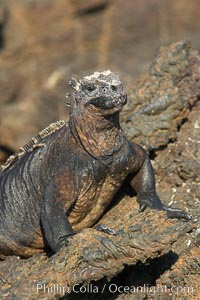
Marine iguana on volcanic rocks at the oceans edge, Punta Albemarle.
Species: Marine iguana, Amblyrhynchus cristatus
Location: Isabella Island, Galapagos Islands, Ecuador
Image ID: 16570
Species: Marine iguana, Amblyrhynchus cristatus
Location: Isabella Island, Galapagos Islands, Ecuador
Image ID: 16570
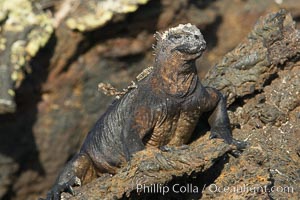
Marine iguana on volcanic rocks at the oceans edge, Punta Albemarle.
Species: Marine iguana, Amblyrhynchus cristatus
Location: Isabella Island, Galapagos Islands, Ecuador
Image ID: 16571
Species: Marine iguana, Amblyrhynchus cristatus
Location: Isabella Island, Galapagos Islands, Ecuador
Image ID: 16571
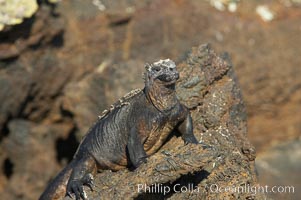
Marine iguana on volcanic rocks at the oceans edge, Punta Albemarle.
Species: Marine iguana, Amblyrhynchus cristatus
Location: Isabella Island, Galapagos Islands, Ecuador
Image ID: 16572
Species: Marine iguana, Amblyrhynchus cristatus
Location: Isabella Island, Galapagos Islands, Ecuador
Image ID: 16572
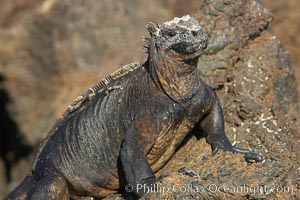
Marine iguana on volcanic rocks at the oceans edge, Punta Albemarle.
Species: Marine iguana, Amblyrhynchus cristatus
Location: Isabella Island, Galapagos Islands, Ecuador
Image ID: 16573
Species: Marine iguana, Amblyrhynchus cristatus
Location: Isabella Island, Galapagos Islands, Ecuador
Image ID: 16573